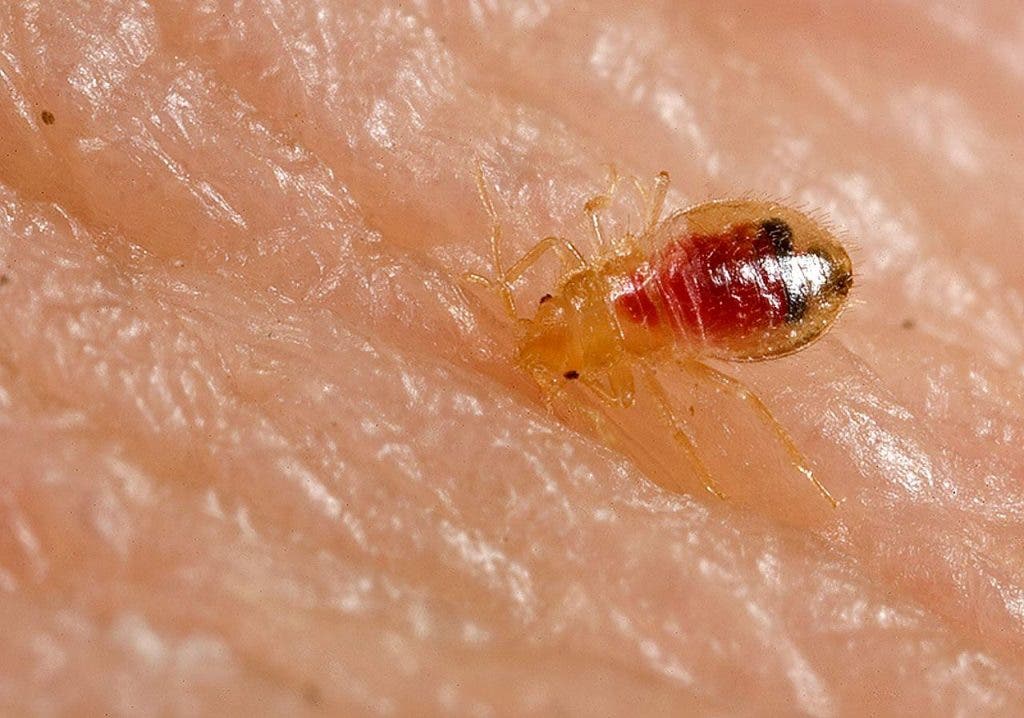If you don’t want bed bugs biting you, then changing your sheet’s colour might help. A recent study found bed bugs love red and black, but keep away from surfaces coloured in yellow or green.
Meet the vampire under your bed
Bedbugs (Cimex lectularius) are small blood-sucking insects that can live in cracks and crevices in and around your bed. This makes them very difficult to spot, especially during the day when they prefer to lurk. At night, the insects crawl on the bed attracted by carbon dioxide and body heat to feast on some of your blood. You can easily recognize bed bugs from other insects because they’re oval, reddish-brown and about the size of an apple seed.
Bed bugs are flat, reddish-brown, oval insects up to 4 to 5 mm long or the size of an apple seed. If you get bitten during the night, but aren’t sure bedbugs are to blame, it’s worth checking out the crevices around your bed. Look for black to brown stains on porous surfaces or black to brown mounds on nonporous surfaces. These are the bugs’ feces.
Red is for blood
Dr Corraine McNeill and colleagues at the University of Florida and Union College in Lincoln wanted to investigate if bed bugs preferred certain colors for their hiding places. The researchers made harborages from variously colored cardstock and placed them in a Petri dish along with the bed bugs. The bed bug had ten minutes to decide which of the colored harborages it preferred.

Various sized petri dish arenas were used for color harborage experiments. (A) Smaller petri dishes were used for the two-choice assays. (B) Larger petri dishes were used for the seven-choice assays. Credit: JME
“It was speculated that a bed bug would go to any harborage in an attempt to hide,” wrote the authors. “However, these color experiments show that bed bugs do not hide in just any harborage; rather, they will select a harborage based on its color when moving in the light.”
“We originally thought the bed bugs might prefer red because blood is red and that’s what they feed on,” said Dr. McNeill, one of the paper‘s co-authors. “However, after doing the study, the main reason we think they preferred red colors is because bed bugs themselves appear red, so they go to these harborages because they want to be with other bed bugs, as they are known to exist in aggregations.”
Interestingly, bugs’ colour preferences changed with age, and differed when they were in groups or alone. Preferences also varied depending on whether or not the bed bugs were fed. Males and females also seemed to prefer different colours. Generally speaking, red and black seemed to be favored, while green and yellow avoided. The researchers think the bed bugs like red because it resembles blood or their own actual colour. Bed bugs like to stay in groups. Oppositely, they might avoid green and yellow because the high contrast reminds them of daylight, which they dread.
Don’t throw away your black and red sheets yet! No actual tests involving sheets were made, so saying yellow sheets will repel bed bugs might be a stretch. You’re welcome to try and experiment on your own, though.
“I always joke with people, ‘Make sure you get yellow sheets!'” said Dr. McNeill. “But to be very honest, I think that would be stretching the results a little too much. I think using colors to monitor and prevent bed bugs would have to be specifically applied to some sort of trap, and it would have to be used along with another strategy for control. I don’t know how far I would go to say don’t get a red suitcase or red sheets, but the research hasn’t been done yet, so we can’t really rule that out completely.”
If you actually want to get rid of bed bugs, call the professionals.











